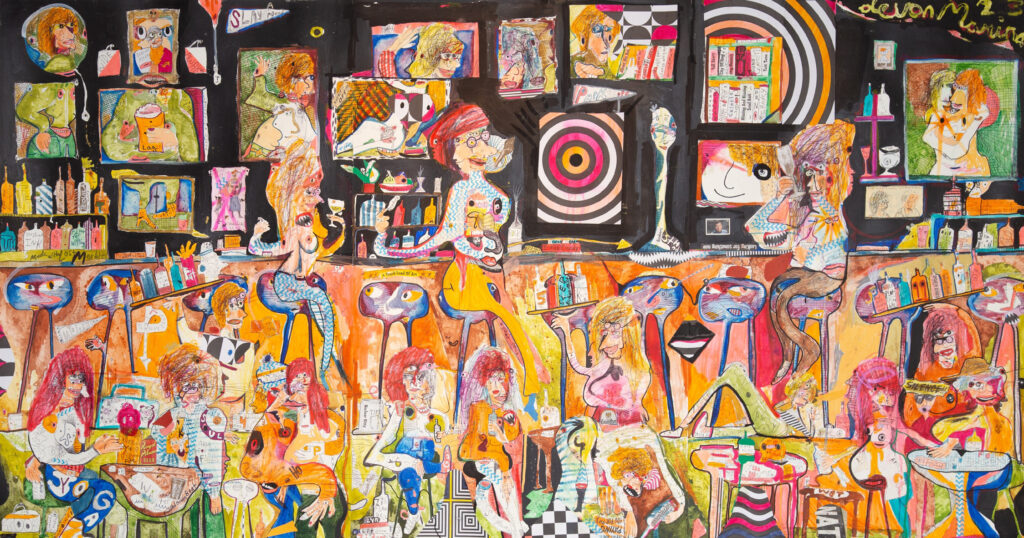
Three artists who hail from Canada have been consistently showing in New York, bringing their fresh and signature voices to the city’s visual arts.
When their works are placed next to each other, they may appear somewhat divergent, however due to the authenticity of each artist, they reveal a common thread.
Living in Toronto, Devon Marinac has been creating art for nearly twenty years. Having started taking visual arts seriously as a teenager, he did not take any classes in art at high school but instead focused on dramatic arts and writing for film and theatre. At home, however, he was busy building a portfolio of his own. So busy and so adept at what he was doing as he taught himself, his portfolio was accepted by the Ontario College of Art and Design where he attended for a year and a half. After leaving school he continued making paintings and drawings that were not tutored in the art academy way. Marinac created a prurient, energetic and fun world. And in his own words his artworks are “highly detailed graphic renderings of figures and objects littered with text and swaths of color to elicit a sense of rhythm and movement.”
It is a physical process for Devon, standing and using his body when he creates. In the past he would dive immediately into in a painting, though recently he says there is more of a general idea or framework before he starts and then from there he begins to break loose and let his hand and mind pull coherence from the ether. A metaphor he has used is that the initial idea is like starting with a stencil and then splashing color into it to reveal the image waiting below. The viewer of his work can see his ideas appear through the rabble of pen lines and brush strokes that come together to form the figure of a primitive woman with a modern sense, a bookcase weighing on a room seemingly from an author’s study, the colors that swirl and mash to set scenes of naked love, of night-time dissolution, the joy of city chaos, the world and how it spins, and of a sunny day playing badminton. His work stands out with its movement and color to grab the viewer.
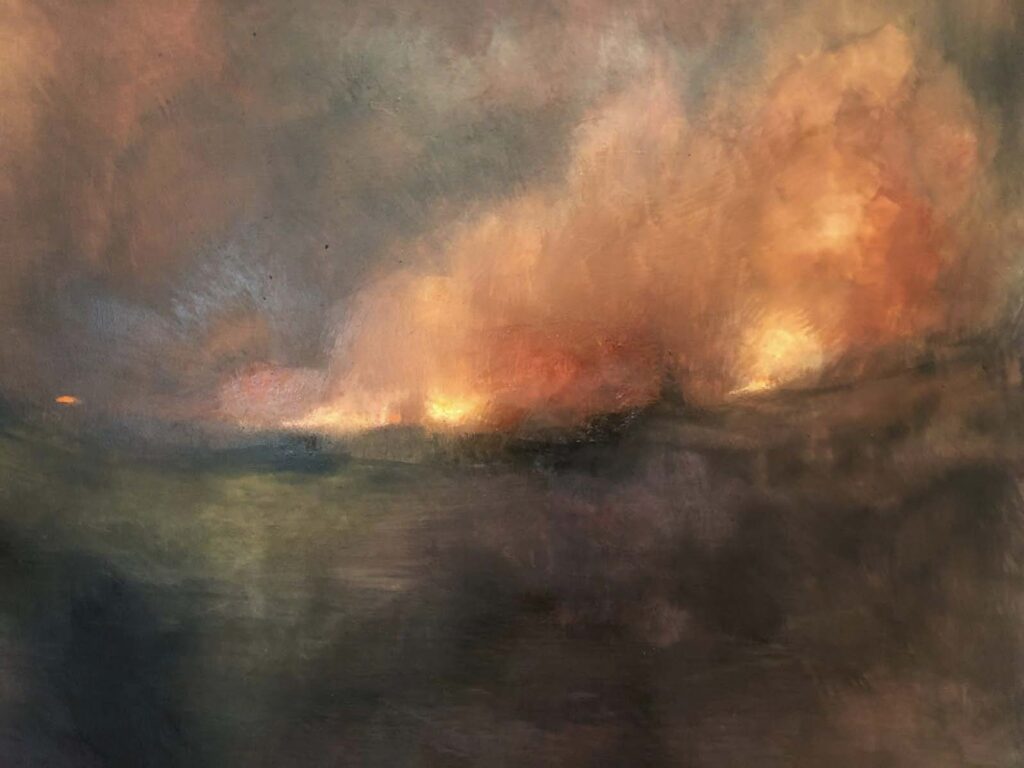
Lesley Johnson grew up making art, as she says, since she could hold a crayon. It was through different ways of making art that Johnson grew her craft, starting with fine arts in high school and college, having graduated from Mount Alison’s fine art program, then moving away from Canada’s fine art world as she found it somewhat stifling, and wanted to make art that she felt compelled to make, art that did not fit into categories or operate through grants or a government run gallery. She found success within publishing, writing and illustrating. After coming to the United States, she returned to an earlier love of the art in letter forms. Having started making some fine art with lettering she moved into sign painting, then became a muralist and decorative painter working in New York. Recently, she found her way back to fine art painting and has started showing her work on the Lower East Side.
First she begins by choosing her colors which she says can range from two to fourteen, then she brings the colors together, incorporating her yogic studies into her art practice as her brush glides intuitively like wind while her images take shape. Drawing on many influences such as Alice Neel, Sidney Sime, Joan Nelson, Bacon, Turner, Hambleton, and Bierk, Johnson creates images that operate outside definition where one can take a step back and see pure abstraction, then step in to see the edges and orms of a landscape pieced together with colors layered rich and textured to make a depth that keeps the viewer seeing more.

Over the course of more than thirty years, Jason McLean has been showing his work throughout the world in galleries, museums and Freeman’s Alley (found in the Lower East Side, NYC). Originally from London, Ontario, Jason now lives in Brooklyn, New York with his family where he continues to create works of a singular authenticity. Starting when he was little, drawing over the faces of the TV Guide and cutting out hockey players, Jason then took part in a middle school arts program that laid the ground work for his on-going education in graphic work and postal art, and he began incorporating music and performance in early shows.
Being curious and somewhat obsessive, McLean works his way through the ideas and images using many different angles while incorporating words, and sources collected from literally the streets around where he lives and walks, embodying sights and sayings that most move past without a second look.
Mental health, and his own history with it, plays an element in Jason’s work, a part that he feels some may miss, and in not understanding this, think his work may be nonsensical or satirical, though he is forgiving, as he says, there is some ambiguity in what he does. So we see the emotional landscapes created with his lines and inter-slicing color are not telling the ordinary story, they are telling the story of someone who has ridden the waves of the edges of an insider’s perspective of how we perceive our everyday life, and he has come back with a new visual language to display what we perhaps ignore that is so beautifully right in front of us. With works that reflect his interior and exteriors he has the ability to illustrate the feelings and understandings that bind the most outlandish with the most common and then take that bond and hand it over to us the viewer as the sublime.
These three artists arrive at their final images, their varying themes, shapes and colors, in different ways, but the result is the same. A sense of awe is delivered to the viewer. The experience can move beyond this, if the cuffs of reason are removed, where logic and time are also removed, and the edges of definitions allowed to blur. Then, as if a mask is removed, we can ultimately see the true nature of the art without bias or preconception. G&S

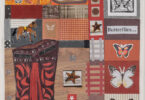
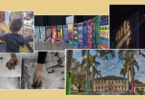
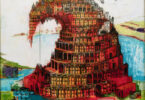
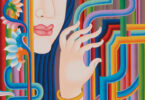
Leave a Comment